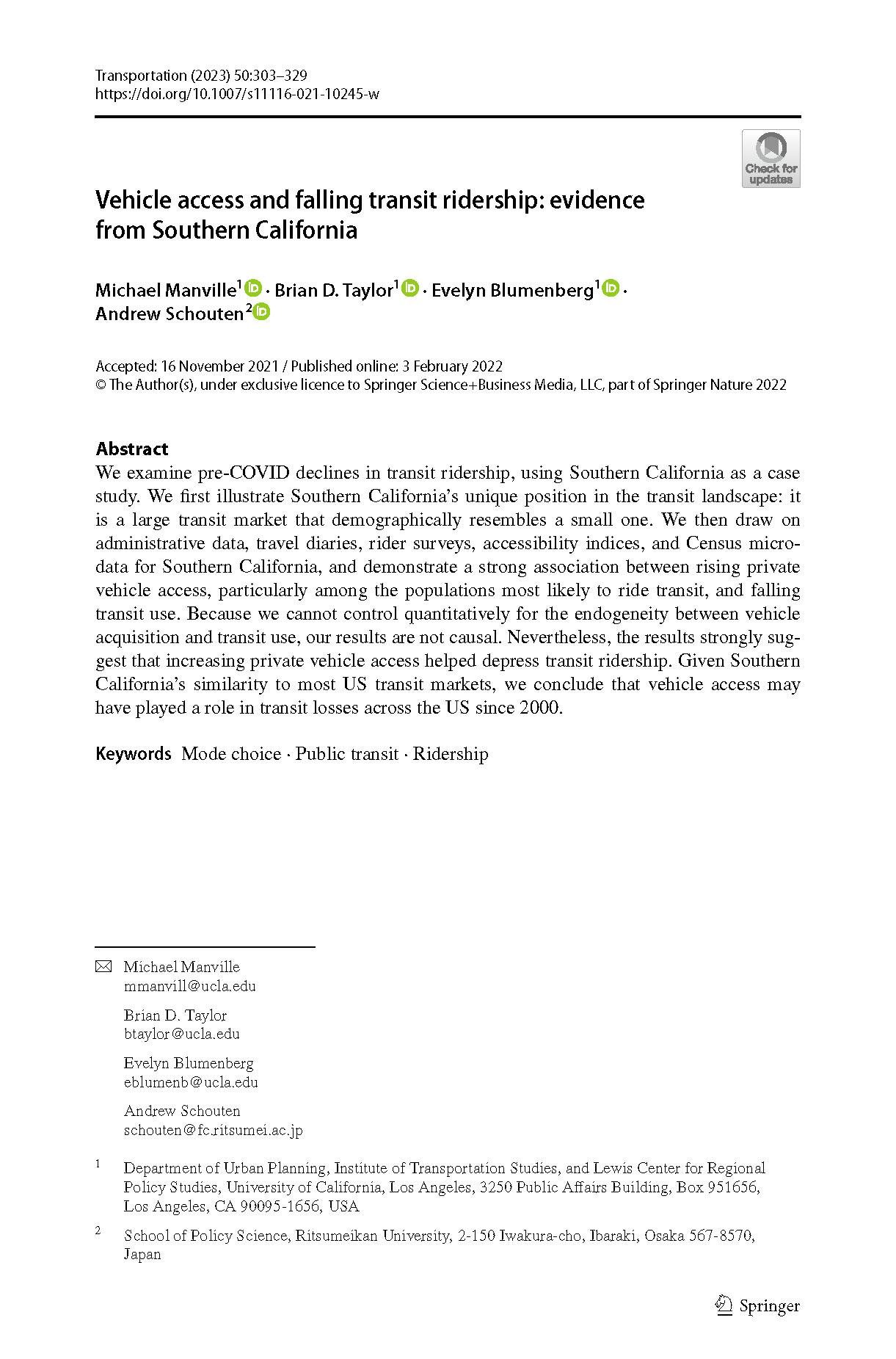Date: February 1, 2023
Author(s): Michael Manville, Brian D. Taylor, Evelyn Blumenberg, Andrew Schouten
Abstract
We examine pre-COVID declines in transit ridership, using Southern California as a case study. We first illustrate Southern California’s unique position in the transit landscape: it is a large transit market that demographically resembles a small one. We then draw on administrative data, travel diaries, rider surveys, accessibility indices, and Census microdata for Southern California, and demonstrate a strong association between rising private vehicle access, particularly among the populations most likely to ride transit, and falling transit use. Because we cannot control quantitatively for the endogeneity between vehicle acquisition and transit use, our results are not causal. Nevertheless, the results strongly suggest that increasing private vehicle access helped depress transit ridership. Given Southern California’s similarity to most US transit markets, we conclude that vehicle access may have played a role in transit losses across the US since 2000.
About the Project
In the last ten years transit use in Southern California has fallen significantly. This report investigates that falling transit use. The project examines patterns of transit service and patronage over time and across the region and considers an array of explanations for falling transit use: declining transit service levels, eroding transit service quality, rising fares, falling fuel prices, the growth of Lyft and Uber, the migration of frequent transit users to outlying neighborhoods with less transit service, and rising vehicle ownership. While all of these factors probably play some role, the research concludes that the most significant factor is increased motor vehicle access, particularly among low-income households that have traditionally supplied the region with its most frequent and reliable transit users.


